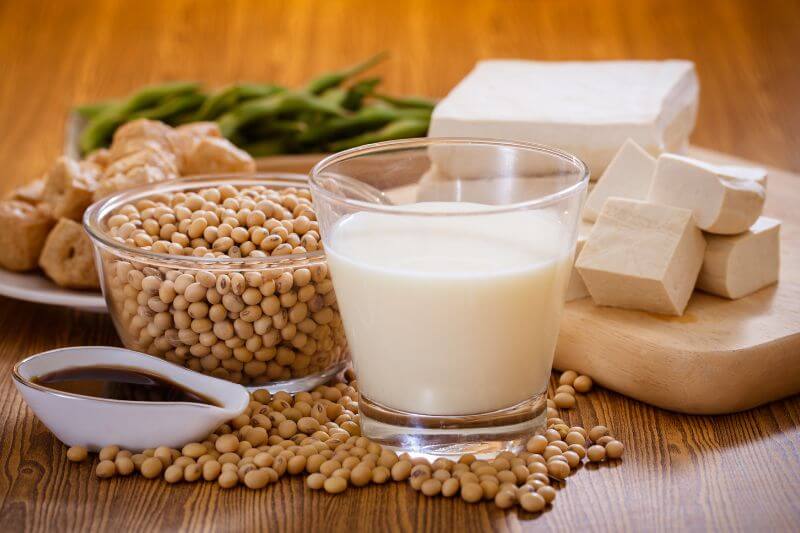Nutrition plays a vital role in our overall health, and the choices we make regarding food can significantly affect our well-being. Soy has gained popularity in recent years thanks to its numerous potential health benefits. However, it is also surrounded by controversies and misconceptions. Let’s clarify what is true and what is false.
Soy is a legume that originates from East Asia and is widely cultivated for its protein-rich seeds. It is utilized in the production of various food items, including tofu, soy milk, soy sauce, and more.
Health Benefits Of Soy
The health benefits of soy are abundant, making it a valuable component of a balanced diet.
First and foremost, soy is an excellent source of high-quality plant-based protein, making it an ideal substitute for animal proteins, which is particularly advantageous for those following vegan or vegetarian diets. Soy protein contains all the essential amino acids required for growth and tissue repair.
Additionally, soy is high in dietary fiber, which aids in regulating digestive transit and weight management. The fiber in soy can also help lower blood cholesterol levels, contributing to heart health.
Soy is packed with vital vitamins such as vitamin K, vitamin B6, and vitamin C. Furthermore, it’s abundant in minerals like iron, calcium, and potassium, all of which are essential for the body’s proper functioning.
Phytoestrogens In Soy: Are They A Cancer Risk?
There are numerous myths surrounding soy consumption, the most prevalent being: “Soy can increase cancer risk, particularly in women.”
Phytoestrogens are plant compounds that mimic estrogen, a female hormone, and are present in significant amounts in soy. These phytoestrogens can attach to estrogen receptors in the human body, raising concerns about their health effects.
However, numerous scientific studies have refuted this claim, indicating that the effects of phytoestrogens are complex and that moderate consumption tends to yield health benefits.
Genetically Modified Soy?
Another concern is the presence of genetically modified (GM) soy in the marketplace.
GMOs are organisms whose genetic material has been artificially altered to introduce specific traits, such as pest resistance or herbicide tolerance. In the case of GM soy, the genetic modifications are often intended to enhance crop profitability and facilitate the production of soy-based products.
Some individuals worry that genetic alteration might lead to unintended consequences for soy’s nutritional composition or the presence of potentially harmful substances.
Current studies have not provided conclusive evidence that consuming genetically modified soy poses serious health risks. Regulatory food agencies conduct thorough assessments of GMOs before they are approved, and marketed GM products are generally deemed safe for human consumption. However, it’s understandable that some people prefer to avoid GMOs as a precautionary principle.
For those looking to reduce their exposure to GMOs, there are non-GMO alternatives available on the market, including products labeled “non-GMO.”
Alternatives To Soy
For individuals seeking to diversify their diets or who have personal reasons for avoiding soy, there is a wide array of nutritious alternatives. Not only do they offer a variety of flavors and textures, but they also serve as excellent sources of plant-based protein.
- Legumes such as beans, lentils, chickpeas, and peas are fantastic sources of plant protein. They can be prepared in numerous ways, whether in curries, soups, salads, or veggie burgers. Moreover, legumes are high in fiber, vitamins, and minerals, making them a healthy option for those who wish to steer clear of soy.
- Nuts (like almonds, cashews, and macadamia nuts) and seeds (such as chia, flax, and sesame seeds) are excellent sources of protein, healthy fats, and essential nutrients. These can be eaten as snacks, added to cereals, or incorporated into smoothies to boost protein intake.
- Seitan, often referred to as “wheat meat,” is a soy alternative made from wheat gluten. It is valued for its meat-like texture and its ability to absorb the flavors of sauces and spices. Seitan is commonly used in vegan and vegetarian dishes.
- If you want to avoid soy but still enjoy tofu, there are also tofu variants made from other legumes, like chickpeas, black beans, or lentils. These alternatives provide a range of interesting flavors and textures.
It is essential to tailor your diet according to individual needs and preferences while ensuring a balanced and varied intake.
Did You Know
Soy sauce, also known as “shoyu” in Japan, dates back over 2,500 years. It was developed in China, where it was used for food preservation and seasoning. Soy sauce was later introduced to Japan, where it was adapted and refined to become one of the most iconic condiments in Japanese cuisine.







